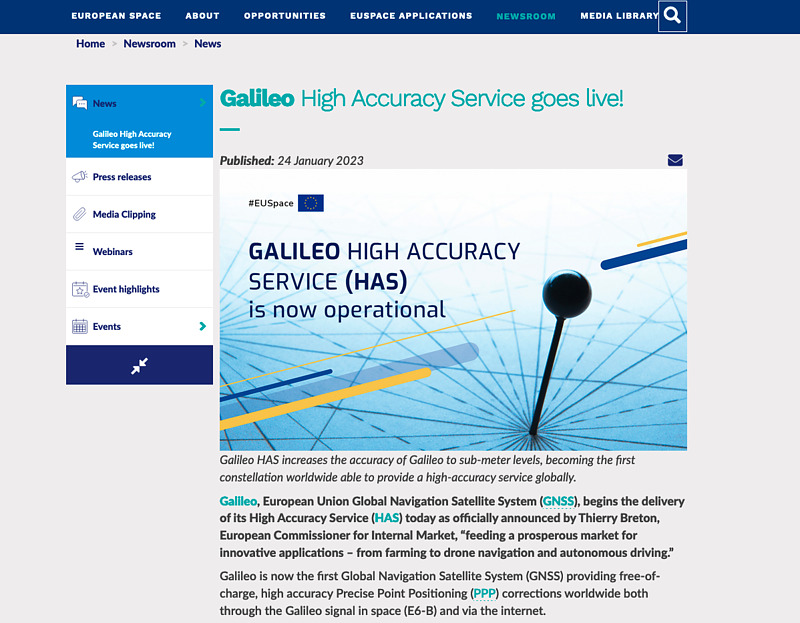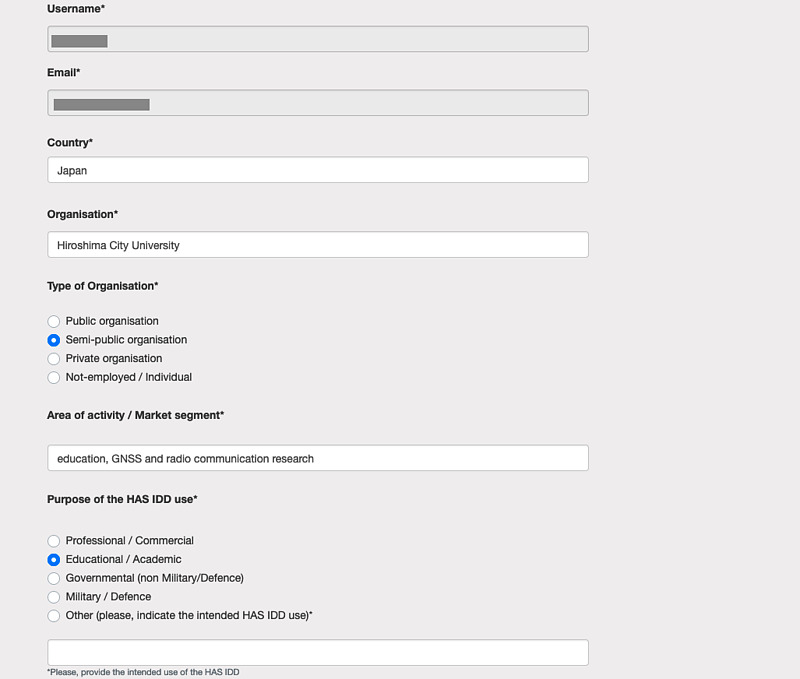Start of quasi-zenith satellite QZNMA and Galileo HAS
Big news in satellite navigation announced on the same day
News about the Japanese quasi-zenith satellite system (QZSS, petnamed Michibiki) and the European positioning satellite system Galileo have been announced on the same day.
Michibiki stands for an oracle, a person, or an equipment that vectors someone to one’s dream or correct ways in Japanese.
Michibiki QZNMA
QZNMA (quasi-zenith satellite navigation message authentication) interface control document (ICD)IS-QZSS-SAS-001 draft version was announced on 2023-01-24. QZNMA is an authentication message provided to allow the user to verify that the navigation satellite message received is correct. QZNMA will be trial-delivered from Michibiki in July 2023, and the service is scheduled to start in April 2024.

According to this ICD, the target signals for navigation message authentication by QZNMA are four types: the widely used L1 C/A signal, its successor signal L1 C/B signal, the future signal L1C signal, and another frequency L5 signal (p 5, Table 3-1). QZS-1 (quasi-zenith satellite first), which has been active for 10 and a half years and is currently in standby operation, is also subject to this certification. Authentication messages are broadcast as part of each navigation message (p.9, Table 4-1).
QZNMA also provides authentication for navigation messages broadcast on the L1 C/A, L1C, and L5 signals of the American global positioning system (GPS) satellites and the E1b and E5a signals of the European Galileo satellites. (p.5, Table 3-2). Authentication messages for these navigation messages will be broadcast in the L6E signal together with MADOCA-PPP (Multi-GNSS Advanced Orbit and Clock Augmentation - Precise Point Positioning), one of the signals that improve the positioning accuracy of Michibiki (p 9, Table 4-1).
I will take a closer look at the QZNMA ICD and I will try to decode Michibiki raw navigation messages and create a QZNMA decoder.
L6E signal reception is necessary to obtain QZNMA messages for GPS and Galileo. Of the receivers I own, the open source software-defined radio Pocket SDR and the Allystar HD9310 Option C can receive this L6E signal (Reference: Receiving QZSS MADOCA-PPP broadcast with Pocket SDR, L6E signal reception with HD9310 option C).
Galileo HAS
The European Galileo satellites have been test-broadcasting a signal HAS (high accuracy service), which improves positioning accuracy. And yesterday, on 2023-01-24, Galileo HAS operational start was announced.
HAS is delivered both on the Galileo satellite’s E6B signal and on the Internet. We can use it for free.

I try applying for the internet HAS delivery. Opening EUSPA (European Union Agency for the Space Programme) homepage, logging in to your GSC (GNSS Service Center) account (Reference: How to create an account, and pointing the top of the banner Galileo → Services → Galileo High Accuracy Service (HAS) → Galileo HAS Internet Data Distribution, you can apply for an NTRIP (networked transport of RTCM via Internet protocol) account from the page “Galileo HAS Internet Data Distribution”.

Pocket SDR, the open source software defined radio receiver, can receive E6B signals! Also, the NovAtel OEM729 receiver seems to be able to receive E6B signals.
Conclusion
Two big news came in yesterday on 2023-01-24. This welcome news got me busy with signal reception and decoder creation (^_^)